|
Page < 1 2 3 4 5 6 7 8 9 10 11 12 13 14 15 16 17 18 19 20 21 22 23 24 25 >
Show
in alphabetical order
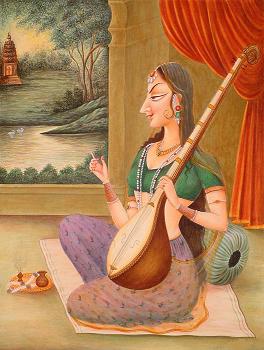 381.
Mirabai (1500 - 1550)
She was born a Rajput princess, is undoubtedly India's best known
saint-poetess of bhakti in the purest Vaishnava tradition. Her
bhakti poetry is immortal. Mirabai was born 500 years ago in a little-known
village called Kurki in Mewar. The much loved daughter of Rana
Ratan Singh, Mira was nurtured by her grandfather Rao Duda in
the fortress city of Merta in Mewar. According to the royal
custom she was married in 1516 to Prince Bhojraj, son of Rana
Sanga, ruler of the Sisodiya clan of Mewar. 381.
Mirabai (1500 - 1550)
She was born a Rajput princess, is undoubtedly India's best known
saint-poetess of bhakti in the purest Vaishnava tradition. Her
bhakti poetry is immortal. Mirabai was born 500 years ago in a little-known
village called Kurki in Mewar. The much loved daughter of Rana
Ratan Singh, Mira was nurtured by her grandfather Rao Duda in
the fortress city of Merta in Mewar. According to the royal
custom she was married in 1516 to Prince Bhojraj, son of Rana
Sanga, ruler of the Sisodiya clan of Mewar.
In 1521 Bhojraj died, soon followed by Rana Sanga.
Mira refused to lead the secluded life of a royal widow and
defied all conventions. She sang and danced with greater mystic
frenzy. Her cymbals and her anklets were heard even in the
temple on the outskirts of the city, a public place open to all
devotees. Such insubordination had never been witnessed before.
The young Rana Vikram and his mother could not treat Mira with
either indifference or clemency. Her rising popularity and
strong political connections made the Rana so jealous that he
tried to kill her several times..
It is said that once a poisonous snake was sent to her in a
flower basket, but when she opened it she found an image of
Krishna; on another occasion she was given a cup of poison but
drank it with Krishna's name on her lips and was miraculously
saved.
This
Rajput princess's lovely songs have inspired many generations of
Hindus. She sang:
"My only Lord is
Giridhar Gopal
None else, none else, in this false world;
I have forsaken my family and friends,
I sit among saintly souls,
I have lost regard for worldly fame and honor,
My heart swells at the sight of the godly,
It shrinks at the sight of the worldly.
I have watered the creeper of God’s love with my own tears.
Churning the curds of life, I have taken out the butter and
thrown away the rest.
The King, my husband, sent me a cup of poison:
I drank it with pleasure.
The news is now public, everyone knows now
That Mirabai has fallen in love with God!
It does not matter now: what was fated to happen, has happened."
Many stories are told of how the devotion of Mirabai for Lord
Krishna led her to abandon her husband, who was the ruler of the
ancient Rajput state of Mewar, and to pass life in complete
dedication to the praise of her God. Once for example, her
husband, hearing her talking in a closed room to a man, rushed
in with drawn sword to kill her for her unfaithfulness. But it
was Krishna with her, and he transformed her into a multitude of
forms so that the king could not tell which one was really his
wife. In response to her continual pleading for a demonstration
of his love for her, Lord Krishna finally revealed himself in his
glory and absorbed her soul into his. Her hauntingly lovely
songs are still popular in western India and Rajasthan. In this
poem, Giridhar Gopal is a name of Krishna.
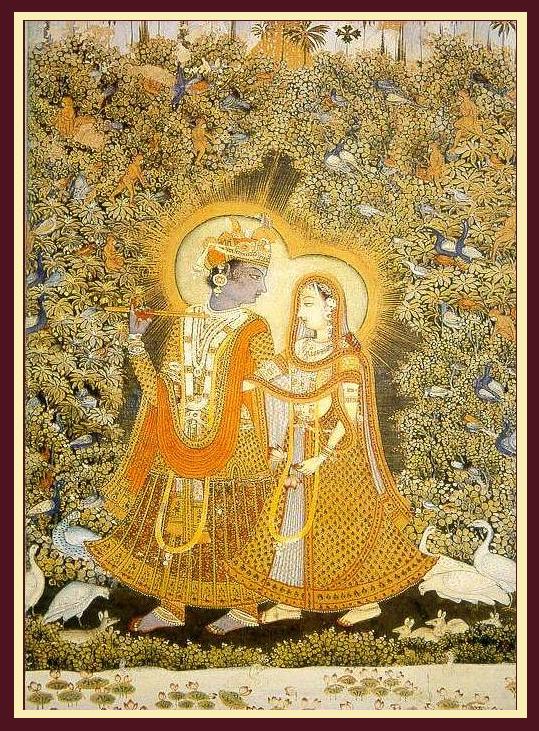
Radha-Krishna -
divine love.
Watch
Lost
/ Submerged city of
Dwaraka
– The
Learning Channel video
Refer
to Meerabai Bhajans: Aisi
Laagi Lagan - By Anup Jalota and http://www.jalebimusic.com
***
(source: exoticindiaart.com).
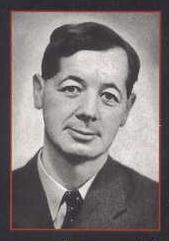 382.
Walter Eidlitz (1892
- 1976) also
called Vaman dasa. A Jew from Germany finds himself in an
internment camp in India during the Second World War. His goal
was to study Indian religion and philosophy. He had left his
family in Germany in late 1930 and traveled to India in search
of God. His wife loved him enough to honor his spiritual quest,
the fruit of which he would share with her years later upon his
return. He has written about his spiritual journey in his book Journey
to Unknown India. 382.
Walter Eidlitz (1892
- 1976) also
called Vaman dasa. A Jew from Germany finds himself in an
internment camp in India during the Second World War. His goal
was to study Indian religion and philosophy. He had left his
family in Germany in late 1930 and traveled to India in search
of God. His wife loved him enough to honor his spiritual quest,
the fruit of which he would share with her years later upon his
return. He has written about his spiritual journey in his book Journey
to Unknown India.
From India he merged from the myriad of
India’s spiritual paths on the bhakti marg, the path of
devotion as taught by Sri Chaitanya.
His goal was to go Mount Kailash, the mountain of God’s
revelation, and at its base Manasarovar, the lake of the divine
spirit. There, says the legend, the eternal human soul glides
upon the clear waves like a swan, untouched by fear, hate, or
desire.
“God himself speaks the Bhagavad Gita, the innermost God
which Brahma the Creator, Vishnu, the Preserver, and Shiva the
Destroyer are only aspects."
Hindus have a greater respect for
the spoken word than do people in the West. Not only every word
in a mantra, but practically every sound and every word in the
language is called akshara in Sanskrit, which means “the
indestructible”. Akshara is also a name for God. A
true mantra should be sung not spoken. Indian scriptures call
Brahma the Creator “the first singer”. Our world is said to
have sprung from the mantra he sang. In the West, these ideas
are probably utterly foreign, and yet there are traces of
similar teachings.
A poor man in India can have a rough
conception of the fact that within himself exists an eternal
atman, which wanders through the ages. He knows that he has
brought about his hard fate in his life through his deeds in a
former existence and that his behavior in this life determines
his destiny. This teaching is known only to a few of the most
profound mystics in the West.
As
Krishna says in the Bhagavad
Gita,
“Never was there a time when
I, nor thou, nor these lords of men, were not, nor will there
ever be a time hereafter, when we shall cease to be….As a man
throweth away old garments and putteth on new; even so, the soul
in the body, having quitted its old mortal frame, entereth into
others which are new….The weapon divideth it not, the fire
burneth it not, the water corrupteth it not, the wind drieth it
not away; for it is indivisible, inconsumable,
incorruptible…Therefore, knowing it to be thus, thou shouldst
not grieve.”
(source:
Journey
to Unknown India - By Walther Eidlitz
p. 1 - 101).
 383.
Franklin Merrell-Wolff
(1887
- 1985) was
an American Mystic, Philosopher, and Mathematician who combined
an extraordinary intellect with profound mystical insight and
authenticity. Born in 1887 in Pasadena, California, he was
raised in San Fernando as the son of a Methodist minister. Wolff
graduated from Stanford University in 1911 with a major in
mathematics and minors in philosophy and psychology. He then
went on to Harvard graduate school to study philosophy. 383.
Franklin Merrell-Wolff
(1887
- 1985) was
an American Mystic, Philosopher, and Mathematician who combined
an extraordinary intellect with profound mystical insight and
authenticity. Born in 1887 in Pasadena, California, he was
raised in San Fernando as the son of a Methodist minister. Wolff
graduated from Stanford University in 1911 with a major in
mathematics and minors in philosophy and psychology. He then
went on to Harvard graduate school to study philosophy.
As a
result of his philosophical studies, Wolff "became
convinced of the probable existence of a transcendent mode of
consciousness that could not be comprehended within the limits
of our ordinary forms of knowledge." Prior to completing
his degree at Harvard, he returned to Stanford to teach
mathematics. When it became clear to him that he must
"reach beyond anything contained within the academic
circles of the West" to Realize Transcendental
Consciousness, he left his promising career in academia to
engage in a spiritual quest. Wolff
was drawn to the philosophical works of the Indian sage Shankara,
who founded the Advaita
Vedanta
school of Hindu philosophy.
Wolff's
first premonitory recognition took place in 1922, approximately
14 years prior to his transcendental breakthroughs. Wolff
describes this first recognition as a noetic insight into the
truth of "I
am Atman".
The term "Atman" is a
Sanskrit
term that Wolff uses to
refer to the transcendental subject to consciousness (see the
discussion above of the second fundamental of the philosophy).
(source: http://www.integralscience.org/gsc/
and http://www.merrell-wolff.org/philo.htm).
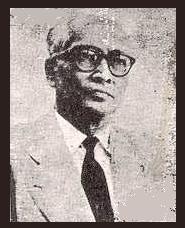 384.
Dr. Abinash Chandra Bose
(1896 - ) was
the Head of the Dept of English in Rajaram College, Kolhapur,
and post-graduate Teacher, Bombay University for 25 years. He
was a keen student of Sanskrit and had taken a life-long
interest in the Vedas. He carried out researches in Mysticism in
Poetry at the Trinity College, Dublin. His approach of the Vedas
has been that of a lover of poetry and a student of India’s
spiritual history and comparative religion. 384.
Dr. Abinash Chandra Bose
(1896 - ) was
the Head of the Dept of English in Rajaram College, Kolhapur,
and post-graduate Teacher, Bombay University for 25 years. He
was a keen student of Sanskrit and had taken a life-long
interest in the Vedas. He carried out researches in Mysticism in
Poetry at the Trinity College, Dublin. His approach of the Vedas
has been that of a lover of poetry and a student of India’s
spiritual history and comparative religion.
“It is usual to describe Vedic poetry as primitive.
If, by 'primitive poetry' is meant tribal song or folk ballad,
then nothing could be farther from the fact. No
primitive poet ever sang:
Thought
was the pillow of her couch,
Sight was the unguent of her eyes.
If we should
call Vedic poetry primitive, we should do so with reference to
its pristine purity and its freedom from the malaise of the
later civilization. Our people have got
a better name for the Vedic age - Satya Yuga, the Age of Truth.
Because the Vedic sages loved life as well as God, every wish of
theirs for the good things of the earth took the form of an
ardent prayer. The Rishis (sages), including women
among them, placed themselves under the discipline of Satya
(Truth) and Rta (Eternal Order), as well as Tapas (spiritual
ardor, superceding animal life). They were pure in their mental
make-up, dedicated to a pure way of life and were transported by
spiritual exaltation and what they accepted as divine
inspiration. Their word (Vak) was, for them, a revelation in
their souls of inner truth of reality, which they creatively
received.
In their
purity, austerity and power, the Vedic hymns have appeared to me
like fresh, clear streams gushing out of a rocky mountain. The
beautiful pictures of life and nature seem to carry some deep,
hidden meaning. The very sound often makes a deep, symbolic
impression. The wise men of India, from the immediate successors
of the Vedic sages right down to our times, have searched for
and discovered the revelation of the deepest spiritual truth in
the Vedas. The visions of the beauty of
life and nature in the Vedas
are extremely rich in poetic value. Perhaps nowhere else in the
world has the glory of dawn and sunrise and the silence and
sweetness of nature, received such rich and at the same time
such pure expression. The beauty of woman has been most tenderly
delineated. The Vedas speak of 'gracious, smiling women' and in
Usha (Dawn) with the beauty of a youthful woman in her, they
find the perfect smile. Life's little things are invested with
holiness and living appears to be a grand ritual.
(source: The
Call of the Vedas - By A C Bose Bharati Vidya
Bhawan Mumbai 1999 p. 1 - 20).
 385.
Graham
Hancock (
? ) is the author of a number of bestselling
investigations of historical mysteries, including The
Sign and the Seal, Fingerprints of the Gods. 385.
Graham
Hancock (
? ) is the author of a number of bestselling
investigations of historical mysteries, including The
Sign and the Seal, Fingerprints of the Gods.
"The
Vedas
(a superb religious literature
with no known parent) might in fact have been the
work of the undeniably maritime Indus
Sarasvati civilization which was long known to have
possessed a script but apparently had no religious
literature.'
"What is the most amazing about these hymnodies is not
so much their overall length, which is awesome, but that for
most of their history it is probable that no written versions of
them ever existed – and not because they could not be written
down but because the priests of the Vedic religion that evolved
into Hinduism believed that they should not be written down but
should be kept alive instead in human memory."
" Almost supernatural feats of
memory - Unlike in other big
modern industrial nations that have long ago lost all sense of
the sacred and all respect for ‘what the ancients said’, the
sacred life still permeates India through and through to such an
extent that an appeal to the authority of scripture can still
settle all disputes. And unlike the cultures of ancient Egypt,
Mesopotamia, China and the Americas, where only spectacular
fossils of architecture and language remain, the culture of
ancient India is still vibrantly alive today in the subcontinent
and offers as its gift to the present a vast library of archaic
rituals, dances, games, ceremonies, festivals and customs as
well as an immense oral literature that has not only been
preserved and continuously passed on in the memory of sadhus and
rishis (sages, wise men) for thousands of years but that is also
celebrated, rehearsed, admired and relished in hundreds of
thousands of Hindu villages from the Himalayas to the sea. "
"In
India, with its vibrant spiritual culture, its armies of ragged
pilgrims and its remarkable Vedas raises the possibility that
the real origins of civilization could be very different – not
driven by economics but by the spiritual quest that all true
ascetics of India still pursue with the utmost dedication.
Such a quest does not deny that the basic material requirements
of the human creature must be met but seeks to limit our
attachment to material things and in general to subordinate
material needs to mental and spiritual self-discipline."
"Indian
thought has traditionally regarded history and prehistory in
cyclical rather than linear terms. In the West time is an arrow
– we are born, we live, we die.
But in India we die only to be
reborn. Indeed, it is a deeply rooted idea in Indian spiritual
traditions that the earth itself and all living creatures upon
it are locked into an immense cosmic cycle of birth, growth,
fruition, death, rebirth and renewal. Even temples are reborn
after they grow too old to be used safely – through the simple
expedient of reconstruction on the same site.
(source:
Underground:
The Mysterious Origins of Civilization – By Graham Hancock
p. 108 - 196 and 94 - 95).
For more refer to chapter on Sacred
Angkor
Watch
Lost
/ Submerged city of
Dwaraka
– The
Learning Channel video
 386. Linda
Johnsen ( ? ) holds
a Master's degree in Eastern studies. She is author of Daughter
of the Goddess: The Women Saints of India, and The
Living Goddess: Reclaiming the Tradition of the Mother of the
Universe. She has published nearly 100
articles in
magazines such as Hinduism Today, Yoga Journal, and Yoga
International and has lectured throughout the United States on
Hindu spirituality. 386. Linda
Johnsen ( ? ) holds
a Master's degree in Eastern studies. She is author of Daughter
of the Goddess: The Women Saints of India, and The
Living Goddess: Reclaiming the Tradition of the Mother of the
Universe. She has published nearly 100
articles in
magazines such as Hinduism Today, Yoga Journal, and Yoga
International and has lectured throughout the United States on
Hindu spirituality.
In her book on Hinduism, she has
written:
"Hinduism
is the one world religion that reaches out to embrace other
faiths with respect, a welcome change from groups who expend
enormous amounts of energy condemning the sincere beliefs of
others. There is no eternal damnation in Hinduism because Hindus
believe absolutely no one is excluded from divine grace.
The Hindu tradition has held the
culture of greater India together for thousands of years,
through fair times and foul. Increasingly, we in the West are
looking to Hinduism with the respect and appreciation it
deserves, realizing we modern people have a great deal to learn
from the oldest religion on Earth.
Today, there's a resurgence of
interest in "the wisdom of the East." Many of us in
the West flounder spiritually, confused by the inability of our
religions to square with scientific reality and craving actual
spiritual experience of which our lives seem so devoid. We're
impressed by the ability of Eastern religions like Hinduism to
meet science head on, agreeing in many respects about important
topics, such as the age and size of the universe.
Today, Hindu
culture is one of the last remaining enclaves of a universal
minded religion.
(source: The
Complete Idiot's Guide to Hinduism - By Linda Johnsen
- cited in introduction and p. 78).
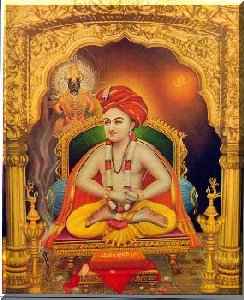 387.
Sant Jnaneshwar (1275
- ) was born over seven hundred years
ago in the village of Alandi, on the banks of the Indrayani
river. The son of a sannyasi, he was shunned by the local
Brahmins. Their father, after living the life of an ascetic,
returned to married life, and on that account the orthodox
Brahmins ostracised the whole family. They were orphaned young
and their genius blazed forth while still in their teens. 387.
Sant Jnaneshwar (1275
- ) was born over seven hundred years
ago in the village of Alandi, on the banks of the Indrayani
river. The son of a sannyasi, he was shunned by the local
Brahmins. Their father, after living the life of an ascetic,
returned to married life, and on that account the orthodox
Brahmins ostracised the whole family. They were orphaned young
and their genius blazed forth while still in their teens.
He was an ardent 'Bhakta'
[devotee] of Lord Krishna, Jnandev, the greatest of them,
is better known as Jnaneshwara, the 'Lord of Wisdom'. His great
work, the Jnaneshwari is a monumental verse commentary on the
Bhagavad Gita. Apart from this there are also his Anubhavamrita
or 'Elixir of Experience'.
Having himself attained this
elixir, he says, It is said that Jnaneshwar won the right to
investiture with the sacred thread by making a water buffalo
recite the Vedas. Alandi is a village located fifteen kilometers
from Pune, on the banks of the Indrayani River. Since ancient
times, the village has been a shrine of Shiva as Siddheshwar,
Lord of Spiritual Attainment. He was the disciple of Swami
Ramanand
He was a poet, philosopher,
mystic and saint who committed Samadhi
700 years ago in his early twenties believing his work
completed. His commentary on Bhagavadgita 'Jnaneshvari' was
written when he was only about 15 years old. In the eighties of
the twentieth century, 'Jnaneshvari' was added to the list of
world's cultural heritage by UNESCO,
due to his unconventionally cosmopolitan visions, thinking and
writing without regarding creed and caste.
"The distinction between
liberated, aspirant and bound subsists only so long as this
Elixir of Experience is unknown to one. The enjoyer and the
enjoyed, the seer and the seen, are merged in the non-dual,
which is indivisible. The devotee has become God, the Goal has
become God, the Goal has become the path; this indeed is
solitude in the universe.'
This magnificent achievement was
completed by the age of 22, when he declared that his life's
work was finished and ceremoniously entered into samadhi in a
specially prepared crypt, having given instruction that it was
to be bricked up. This was in the village of Alandi in Poona
district. There is a beautiful atmosphere of sanctity and
serenity there. It contains a tree under which an unending chain
of recitation of the Jnaneshwari has gone until the present day.
Jnaneshwara has remained a perennial fount of inspiration for
Maharashtra. He was at once the foundation and crown of this
amazing dynasty.
(source: The
mystic poets of Maharashtra - sol.com.au).
388. Robert C.
Priddy ( ? )
who
formerly lectured in
philosophy & social science at the University of Oslo
(1968-1984) has written:
"All
agree that the ancient Indians already operated with a time span
of truly astronomical proportions long before the earliest signs
of natural science in ancient Greece. It is undeniable that
ancient Indian texts present some astonishingly exact scientific
calculations even by today's latest scientific standards, such
as the speed of light, exact size of the smallest particles and
the age of the universe."
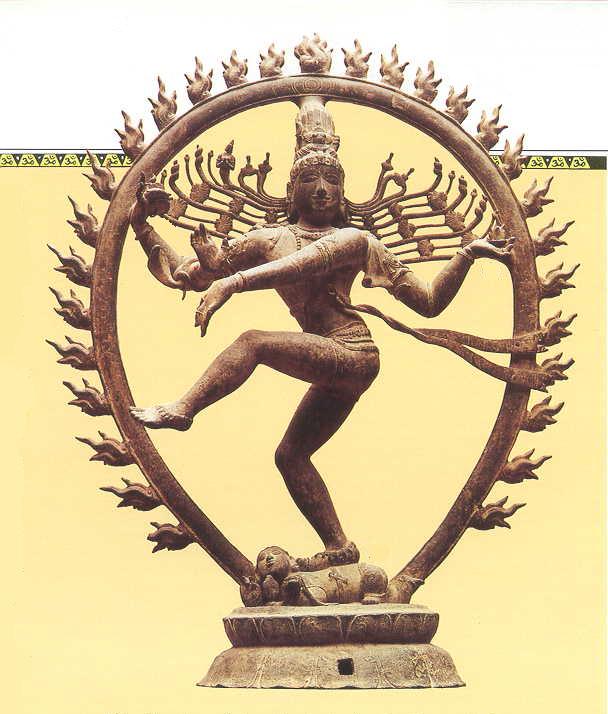
Nataraja: Lord
of the Dance. His spinning motions are the orbits of subatomic
particles and the rotation of the galaxies.
"It is undeniable that
ancient Indian texts present some astonishingly exact scientific
calculations even by today's latest scientific standards, such
as the speed of light, exact size of the smallest particles and
the age of the universe."
For
more refer to chapter on Greater
India: Suvarnabhumi and
Sacred
Angkor
***
"The likelihood is that Indian
civilization existed in times far
more ancient than historians can witness by scientifically-based
methods.
Yet this is ignored due to the limitations of the
current assumptions (or pre-judgmental beliefs) that direct the
minds of historians who themselves belong to a civilization
which in many vital respects may still be inferior in many
important respects."
 "The
age of the Vedas
of ancient India, the first scriptures known to mankind, may be
much greater than supposed by 'scientific historians'. In the
West, it is hardly questioned at all that the Bible's Old
Testament by and large refers to events that - though probably
inaccurately described - actually must have taken place, at
least from the time of Abraham and Ur onwards... more than 5,000
years ago. Hebrew scribes are reckoned to have put sacred oral
traditions into writing centuries after the events.
The same
liberality of belief is not accorded to the doubtless yet more
ancient Vedas, which the evidence shows were much more firmly
based in oral traditions and preserved by a complex
cross-checking system of memorizing.
Yet some historians even
date certain Vedic scriptures only from the earliest extant
manuscripts, sometimes even as late as 1400 A.D. "The
age of the Vedas
of ancient India, the first scriptures known to mankind, may be
much greater than supposed by 'scientific historians'. In the
West, it is hardly questioned at all that the Bible's Old
Testament by and large refers to events that - though probably
inaccurately described - actually must have taken place, at
least from the time of Abraham and Ur onwards... more than 5,000
years ago. Hebrew scribes are reckoned to have put sacred oral
traditions into writing centuries after the events.
The same
liberality of belief is not accorded to the doubtless yet more
ancient Vedas, which the evidence shows were much more firmly
based in oral traditions and preserved by a complex
cross-checking system of memorizing.
Yet some historians even
date certain Vedic scriptures only from the earliest extant
manuscripts, sometimes even as late as 1400 A.D.
It
has been held by some shastris and pundits that Western
historians have vastly underrated the age and authenticity of
ancient Indian scriptures and handed-down accounts of the past. In
the West, it is hardly questioned at all that the Bible's Old
Testament...The same liberality of belief is not accorded to the
doubtless yet more ancient Vedas, which the evidence shows were
much more firmly based in oral traditions and preserved by a
complex cross-checking system of memorizing. Yet some historians
even date certain Vedic scriptures only from the earliest extant
manuscripts, sometimes even as late as 1400 A.D.
It
is frequently said, especially by Western academics, that the
Greeks were the first to introduce natural philosophy, to
speculate on the four (or five) elements, to think of the atom,
to conceive of the heliocentric system, and so on. The evidence
about India's distant past shows that this is most certainly not
the case. That it has been available for a long time, too,
reflects very badly on the scope or the historical competence of
academic Western philosophers, who continue to stare too much at
their European navels.
Great
epics of good and evil, of individual conscience and will versus
fate had been developed in India long before Homer or the
classical European period of the dramatists Aeschylus, Sophocles
and Aristophanes by well over a millennium. On only has to
consider the Mahabharata, which describes the catastrophic armed
conflict that took place according to widespread tradition about
3000 years BC The date calculated by various Indian shastris and
Brahmins from Sanskrit sources is equivalent to 3138 BC. "
(source: On
India's Ancient Past - By Robert C Priddy).
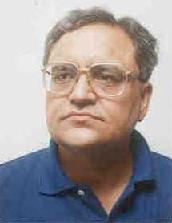 389.
Balbir
K Punj (1949
- ) Member of Parliament and a Rajya Sabha member and
convenor of the BJP's think-tank. 389.
Balbir
K Punj (1949
- ) Member of Parliament and a Rajya Sabha member and
convenor of the BJP's think-tank.
"Hinduism
doesn’t breed exclusivism, intolerance of other religions and
disavowal of the pre-Hindu past. Unfortunately, the same is not
true about proselytising religions."
"Exclusivism
and intolerance in matters of faith are features of Semitic
religions—Judaism, Christianity, Islam. Islam, in fact, had an
empire-building agenda from day one.
Contrary to these desert-born
religions, intolerance and persecution were alien to Hinduism.
It's also
not correct to say that pre-Muslim India was not predominantly
Hindu, that Buddhism was the dominant religion for many
centuries, and that Jainism has an equally long history. By
Hinduism one perhaps implies the Vedic faith. Otherwise,
Buddhism and Jainism, like Sikhism, Arya Samaj, Brahmo Samaj,
are equally Hindu. Their respective founders as well as their
patrons and subscribers were Hindus.
"The Hindu is inclined to
revere the divine in every manifestation, whatever it may be,
and is doctrinally tolerant.... A Hindu may embrace a non-Hindu
religion without ceasing to be a Hindu...he tends to believe
that the highest divine powers complement each other for the
well being of the world and the mankind."
"The
clear-cut and exclusive religious identities of Buddhism,
Sikhism and Jainism and perceiving them as separate religions
are recent phenomena. Otherwise, they were overlapping and
mutually inclusive throughout. Most of the Jains and several
Sikhs even today consider themselves Hindus. Many Hindus worship
Buddha as a reincarnation of Lord Vishnu, visit Jain and
Buddhist temples with devotion and pay obeisance at gurudwaras.
Small wonder then that the all-India convenor of Bajrang Dal,
bugbear of secularists, is Surendra Jain."
(source: The
Hindu Soul In Search Of Its Body - outlookindia.com).
http://www.bjp.org/news/Dec-1002.htm

Lord Ganesha:
Remover of Obstacles.
"Neo-Platonism
and Christian Gnosticism owe much to India. The Gnostic ideas in
regard to a plurality of heavens and spiritual worlds go back
directly to Hindu sources."
Watch Ganapati
Om Kirtan - By Dave Stringer.
***
 390. Hajime Nakamura
(1912 - 1999) Was a Japanese scholar. His field of research
was exceedingly broad, encompassing Indian philosophy, Buddhist
studies, historical studies, Japanese thought, comparative
thought. He was the author of The
History of Early Vedānta Philosophy an
epoch-making study in four volumes. 390. Hajime Nakamura
(1912 - 1999) Was a Japanese scholar. His field of research
was exceedingly broad, encompassing Indian philosophy, Buddhist
studies, historical studies, Japanese thought, comparative
thought. He was the author of The
History of Early Vedānta Philosophy an
epoch-making study in four volumes.
“Indians conducted far more
elaborate speculations than the Westerners of antiquity and the
Middle Ages with respect to the theory of numbers, the analysis
of psychological phenomena, and the study of linguistic
structures. The Indians are highly rationalistic,
insofar as their ideal is to recognize eternal laws concerning
past, present, and future. The thought represented by
Tertullian’s aphorism, “credo quia absurdum,” or “I
believe because it is absurd,” had no receptivity in
India.
The Indians are, at the same time, logical since they
generally have a tendency to sublimate their thinking to the
universal; they are at once logical and rationalistic. On the
contrary, many religions of the West are irrational and
illogical, and this is acknowledged by the Westerners
themselves. For example, Albert Schweitzer, a pious and most devoted
Christian, says, “Compared to the logical religions of Asia,
the gospel of Jesus is illogical.”
It is often contended that in contrast to Western thought the
spirit of tolerance and mutual concession is a salient feature
of Eastern thought. The religion of the West at times is harsh
and even emphasizes struggle for the sake of keeping the faith
and condemning unbelievers:
“If any man come to me, and hate not his father, and
mother, and wife, and children, and brethren, and sisters, yea,
and his own life also, he cannot be my disciple.” (Luke,
14.26).
Such aggressive thoughts as expressed here did not appear at
all in the religions of East Asia. Throughout
the religious world of India a more tranquil and peaceful
atmosphere has prevailed from time immemorial. Gotama and
Mahavira ended their lives in peace.
"The idea of tolerance and concession is based on admitting
the compatibility of many different philosophical views of the
world. The Indians are prone to tolerate the co-existence of
philosophical thoughts of various types from the metaphysical
viewpoint. Interference
with religions on the part of the state was not found in India,
but in China it occurred to a considerable degree.”
(source: Ways of Thinking of Eastern
Peoples: India-China-Tibet-Japan- By Hajime Nakamura p. 16 – 19).
He firmly believed that:
“Without Indian influence Japanese
culture would not be what it is today.”
(source:
Japan and Indian Asia - By Hajime Nakamura
p. 1). For more on Japan refer to chapter on Glimpses
XVII
 391. Friedrich Heiler (1892 – 1967)
born in Muenchen, Germany. He was a professor of history of
religions. 391. Friedrich Heiler (1892 – 1967)
born in Muenchen, Germany. He was a professor of history of
religions.
He
is the author
of Mysticism of the Upanishads,
Christian faith and Indian thought and Das Gebet and
Die Religionen der Menschheit pointed out that
Greek mysticism was borrowed from India.
He
wrote:
"
India is our motherland of speculative theology."
“There runs in unbroken chain from
the Atman-Brahman mysticism of the Vedic Upanishads to the
Vedanata of Sankara on the one side and on the other through the
mystical technique of the Yoga system to the Buddhist doctrine
of salvation.
Another line of development equally
continuous leads from the Orphic-Dionysiac mysticism to Plato,
Philo and the later Hellenistic mystery cults to the Neoplatonic
mysticism of the Infinite of Plotinus which is in turn is the
source of the “mystical theology” of the pseudo-Dionysius
the Areioagute…..Perhaps this second
chain is only an offshoot from the first, since the Elatic
speculations and the cryptic doctrine of redemption have
possibly borrowed
essential elements from early Indian mysticism.”
(source:
Prayer:
A Study in the History and Psychology of Religion - By Frederic
Heiler p. 135 and Eastern
Religions & Western Thought - By. Dr. S. Radhakrishnan
p. 248 – 249).
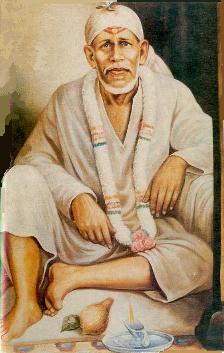 392. Shirdi
Sai Baba ( - 1918) Sai Baba was a Brahmin
from Pathri. His parents had handed him over to a Muslim fakir
and his wife for reasons unknown. It is also known that after
some years that fakir died and before his death he asked his
wife to hand over the child to a petty chieftain of Selu in the
Nizam’s dominions who was called Gopal Rao Deshmukh. It is
believed that Baba must have been eight years old then. Deshmukh,
a Brahmin who was also called Venkatesa (Venhusa as Baba called
him) worshipped Venkatachalapathi of Thirumala and had developed
siddhis. He became Baba’s guru and Baba served him with Bhakti
and devotion. 392. Shirdi
Sai Baba ( - 1918) Sai Baba was a Brahmin
from Pathri. His parents had handed him over to a Muslim fakir
and his wife for reasons unknown. It is also known that after
some years that fakir died and before his death he asked his
wife to hand over the child to a petty chieftain of Selu in the
Nizam’s dominions who was called Gopal Rao Deshmukh. It is
believed that Baba must have been eight years old then. Deshmukh,
a Brahmin who was also called Venkatesa (Venhusa as Baba called
him) worshipped Venkatachalapathi of Thirumala and had developed
siddhis. He became Baba’s guru and Baba served him with Bhakti
and devotion.
He has said:
“The creator God is one and the same for both communities,
Hindus and Muslims. This is a mere verbal difference. Sadhakas
should not attach importance to it. But
see one God, Sat Chit Ananda in everything. He that
is called Allah Ilahi by Muslims is the same as Seshasayee for
the Hindus. In your Puranas you have the story of Chokia Mahar
who became hundred times dearer than his pujari to Pandarinath. He
who is pure in heart is pure and holy wherever he is.”
Baba soon moved on to the dilapidated and crumbling mosque
and made himself comfortable there. The place which was later
called Dwaraka Mayi was to
be his home till his death. He dug a pit and started a fire
which was called the dhuni and
it was kept burning day and night and it continues to burn even
today at Shirdi.
He taught:
“I am the attributes of Absolute Nirguna. I have no name
and no residence.
“I am embroiled myself in Karma and got this body. Brahman
is my father and Maya is my mother. I am formless and in
everything. I fill all space and am omnipresent. I am water, in
land, in crowds and also in solitary wilderness. I am in the
fire and in ether.”
(source: God
who Walked On Earth - By Rangaswami Parthasarathy p.
20 - 23 and Great Indian Saints - By
Pranab Bandyopadhyay p. 224 - 225).
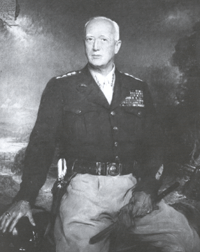 393.
General
George S. Patton
(1885-1945) He came from a long line of soldiers who fought and
often died in many conflicts, including the American Revolution
and, in particular, the Confederate side in the American Civil
War. 393.
General
George S. Patton
(1885-1945) He came from a long line of soldiers who fought and
often died in many conflicts, including the American Revolution
and, in particular, the Confederate side in the American Civil
War.
Remembered
for his fierce determination and ability to lead soldiers,
General S. Patton, Jr. is considered one of the greatest
military figures in history.
He
believed that he had acquired his military skills on ancient
battlefields.
He
was a staunch believer in reincarnation.
One of his favorite topics, he would
offer up as evidence pertinent bits of The
Bhagavad Gita:
"For
sure is the death of him that is born, and sure the birth of him
that is dead"
He
used to point out that the poet William Wordsworth also shared
his belief in reincarnation. It is
impossible for a person familiar with Indian thought not to see
the reflection of Vedanta in Wordsworth poem - Tintern Abbey
written in 1798.
(source: http://www.lib.byu.edu/~english/WWI/over/glass.html
and Coming Back: The Science of
Reincarnation - By ISCKON p. 9).

"Suppose a
thousand suns should rise together into the sky; such is the
Glory of the Shape of Infinite God."
Lord Krsna
expounds the unique philosophy of the Bhagavad Gita to Arjuna.
He then appears before him in his Awe-inspiring Majesty.
(Artwork
courtesy of The Bhaktivedanta Book Trust International, Inc. www.krishna.com).
Watch
Lost
/ Submerged city of
Dwaraka
– The
Learning Channel video. Watch Maha
Vishnu Das of ISKCON - lecture on The Bhagavad Gita.
Refer to jalebimusic.com.
Refer
to Bhaja
Govindam
- kamakoti.org.
***
 394.
Victor
Hugo (1802
– 1885) He was a French author, designer, and artist.
He was possibly the most important of the Romantic authors in
the French language. His major works include the novels Notre
Dame de Paris and Les
Misérables, and a large body of poetry. 394.
Victor
Hugo (1802
– 1885) He was a French author, designer, and artist.
He was possibly the most important of the Romantic authors in
the French language. His major works include the novels Notre
Dame de Paris and Les
Misérables, and a large body of poetry.
Victor
Hugo’s respect and awe for the literary masterpieces of India
were born of his perception of the immensity of the universe
described in the epics. In ‘Supremate,’
a poem in his Legend of the Ages,
he versified the narrative portion of the Kena Upanishad
in 1870.
He
imitated the Kena
Upanishad in his poem, Suprematie
(The Legend of the Centuries) in 1870.
He
gathered his information from G.
Pautheir’s Les
Livres Sacres de l’Orient.
Vayou -
is Vayu (God of Wind), Agni (God of Fire) and Indra (God of space):
"Lorsque
les trois grands dieux eurent dans un cachot
Mis les démons, chassé les monstres de là-haut,
Oté sa griffe à l'hydre, au noir dragon son aile,
Et sur ce tas hurlant fermé l'ombre éternelle,
Laissant grincer l'enfer, ce sépulcre vivant,
Ils vinrent tous les trois, Vâyou le dieu du Vent,
Agni, dieu de la Flamme, Indra, dieu de l'Espace,
S'asseoir sur le zénith, qu'aucun mont ne dépasse,
Et se dirent, ayant dans le ciel radieux
Chacun un astre au front : " nous sommes les seuls dieux!"
Tout à coup devant eux surgit dans l'ombre obscure
Une lumière ayant les yeux d'une figure.
Ce que cette lumière était, rien ne saurait
Le dire, et, comme brille au fond d'une forêt
Un long rayon de lune en une route étroite,
Elle resplendissait, se tenant toute droite.
Ainsi se dresse un phare au sommet d'un récif.
C'était un flamboiement immobile, pensif,
Debout.
Et les trois dieux s'étonnèrent.
Ils dirent : "Qu'est ceci?"
Tout se tut et les cieux attendirent.
"Dieu Vâyou, dit Agni, dieu Vâyou, dit Indra,
Parle à cette lumière. Elle te répondra.
Crois-tu que tu pourrais savoir ce qu'elle est?
- Certes,
Dit Vâyou. Je le puis."
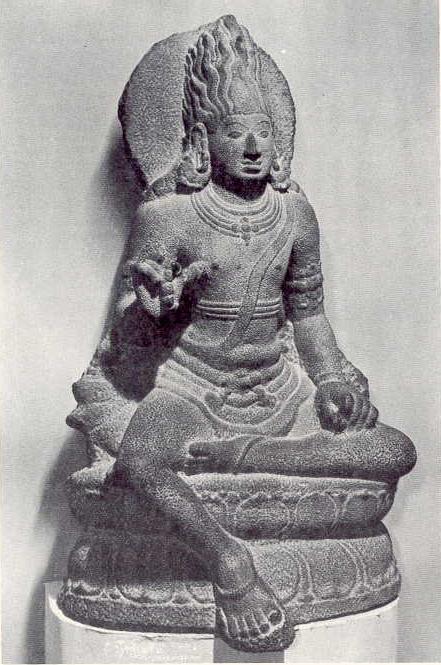
Agni:
God of Fire.
For
more refer to chapter on Greater
India: Suvarnabhumi and
Sacred
Angkor
***
Agni,
dit Indra; frère Agni, mon compagnon,
Dit Vâyou, pourrais-tu le savoir, toi?
Sans doute",
Dit Agni.
Le dieu rouge, Agni, que l'eau redoute,
Et devant qui médite à genoux le Bouddha,
Alla vers la clarté sereine et demanda :
"Qu'es-tu clarté?
(source:
India
and World Civilization - By D. P.
Singhal Pan Macmillan Limited. 1993 p. 241).
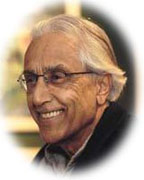 395.
Prof.
Raimundo Panikkar (1918
- ) Born in two major religious traditions, he has been
striving towards the harmony of religion in a pluralistic world. Speaking of
the The Cosmology Hymn/
Hymn of Creation in
the Rigveda, he wrote: 395.
Prof.
Raimundo Panikkar (1918
- ) Born in two major religious traditions, he has been
striving towards the harmony of religion in a pluralistic world. Speaking of
the The Cosmology Hymn/
Hymn of Creation in
the Rigveda, he wrote:
"The
vision of this hymn comes out of a profound insight into the
mystery of reality. It is the product of a mystical experience
that far transcends the limits of logical thinking; it is a
religious chant - for only in music or poetry can such a message
be conveyed - invoking in splendid verses the Primal Mystery
that transcends all categories, both human and
divine....."
(source: The
Vedic Experience - By Prof.
Raimundo Panikkar
p. 54 Mantra-manjari
Pub. Motilal Banarasidas).
"The
Vedic experience may perhaps disclose, not an alternative to the
modern view of life and the world....but an already existing,
although often hidden, dimension of Man himself."
(source:
The
Complete Idiot's Guide to Hinduism - By Linda Johnsen
p. 54).
The Bhagavad
Gita uses
the same expression, gati, to express both the way toward the
goal and the goal itself, often called the parama gati, the
supreme goal. As the word itself suggests, gati (from the root
gam-, to go, to move) means a going, a movement, motion in
general. In the Bhagavad Gita it has the connotation of the
pilgrimage that constitutes human life, a connotation that
allows the text to say that he who is on the path has, in a
certain sense, already reached the end of it, because the end is
not another place outside or after the way itself, but is
already contained in it. Like other parts of the Vedic
Revelation, this truth can be grasped only by personal
experience. The pilgrimage that is life may lead us to its goal,
which in the Bhagavad Gita is described as union with the Lord.
The Lord comes down to earth and manifests himself to Man in
order to proclaim his message of love and salvation. The Lord is
not only the powerful ruler, the mighty God, the just judge, but
also the Savior."
(source: http://www.adishakti.org/prophecies/prophecy_20.htm).
 396.
Sir William Temple
(1628 -1699) English statesman and diplomat, in his Essay
upon the Ancient and Modern Learning (1690) he wrote: 396.
Sir William Temple
(1628 -1699) English statesman and diplomat, in his Essay
upon the Ancient and Modern Learning (1690) he wrote:
"From these famous Indians,
it seems most probable that Pythagoras learned, and transported
into Greece and Italy, the greatest part of his natural and
moral philosophy, rather than from the Aegyptians...Nor does it
seem unlikely that the Aegyptians themselves might have drawn
much of their learning from the Indians..long before..Lycurgus,
who likewise traveled to India, brought from thence also the
chief principles of his laws."
Temple's ideas remained in
isolation in his period until they were revived in the middle of
the 18th century when a battle raged between the 'believers' and
the 'infidels' on the question of the value of Mosaic
interpretation of history.
(source: Much
Maligned Monsters: A History of European Reactions to Indian Art
- By Partha Mitter p. 191).
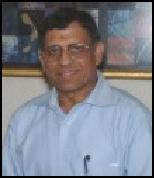 397.
S Gurumurthy
( ? ) a chartered
accountant, acclaimed writer, columnist
and founder of Swadeshi
Jagaran Manch has written eloquently about Indic
Civilization: 397.
S Gurumurthy
( ? ) a chartered
accountant, acclaimed writer, columnist
and founder of Swadeshi
Jagaran Manch has written eloquently about Indic
Civilization:
"In the East, more specifically in India, there prevailed a
society and a social mind which thrived and happily grew within
a multiplicity of thoughts. "Ano
bhadrah kratavo yantu visatah" ("let noble thoughts
come in from all directions of the universe")
went the Rigvedic invocation.
We, therefore, welcomed all, whether it was the Parsis who came
fleeing from the slaughter of Islamic theocratic marauders and
received protection here for their race and their religion, or
the Jews who were slaughtered and maimed everywhere else in the
world. They all found a secure refuge here along with their
culture, civilization, religion and the book. "
"There is
continuity in Indian civilization today. It is not a frozen
continuity. It is change and continuity. It is changeless India
and yet changing India. It can interface with modern world,
holding tradition in one hand. This is the civilizational assert
that India has been able to preserve in spite of thousands of
years of onslaught, with a stateless situation, with hostile
ruling situation, which tried to destroy the society of India,
the ethos of India, the lifestyle of India, the traditions and
faith of India. This capacity to survive seems unique to Indian
civilization. In Europe, the erosion of culture, family values and trivializing of
marriage as mere biological relationship, all resulted in the
decline of Europe so much, that they say, that in the next fifty
years, there may be no Scandinavian nations.
"
(source: Global
Positioning of India - By S Gurumurthy - sulekhahopper.com
and Semitic
Monotheism: The Root of Intolerance in India - By S
Gurumurthy).
 398.
Col.
Henry S Olcott (1832
– 1907) American author, attorney,
philosopher, and cofounder of the Theosophical
Society in a lecture in Allahabad, in
1881. 398.
Col.
Henry S Olcott (1832
– 1907) American author, attorney,
philosopher, and cofounder of the Theosophical
Society in a lecture in Allahabad, in
1881.
“The
ancient Hindus could navigate the air, and not only navigate it,
but fight battles in it like so many war-eagles combating for
the domination of the clouds.
To
be so perfect in aeronautics, they must have known all the arts
and sciences related to the science, including the strata and
currents of the atmosphere, the relative temperature, humidity,
density and specific gravity of the various gases...”
(source: Chapter on Vimanas).
 399. Goswami
Tulsi
Das (1532 –
1623) the greatest and most famous of Hindi poets, and philosopher
was a Sarwariya Brahmin. His fathers name was Atma Ram Dived,
his mother is said to have been Hulasidevi. He was named ‘Rambola’,
as to everyone’s astonishment, the child cried with the word
‘Rama’ as soon as he was born. The name ‘Rambola’ meant
one who uttered Rama. Tulsidas wrote twelve books. The most
famous book is his Ramayan—Ram-charit-manas
- Lake of Rama's
deeds—in Hindi. He wrote this book under the
directions of Hanuman. This Ramayan is read and worshipped with
great reverence in every Hindu home in Northern India. It is an
inspiring book. It contains sweet couplets in beautiful rhyme. Vinaya
Patrika is another important book written by
Tulsidas. 399. Goswami
Tulsi
Das (1532 –
1623) the greatest and most famous of Hindi poets, and philosopher
was a Sarwariya Brahmin. His fathers name was Atma Ram Dived,
his mother is said to have been Hulasidevi. He was named ‘Rambola’,
as to everyone’s astonishment, the child cried with the word
‘Rama’ as soon as he was born. The name ‘Rambola’ meant
one who uttered Rama. Tulsidas wrote twelve books. The most
famous book is his Ramayan—Ram-charit-manas
- Lake of Rama's
deeds—in Hindi. He wrote this book under the
directions of Hanuman. This Ramayan is read and worshipped with
great reverence in every Hindu home in Northern India. It is an
inspiring book. It contains sweet couplets in beautiful rhyme. Vinaya
Patrika is another important book written by
Tulsidas.
He first made Ayodhya his
headquarters, frequently visiting distant places of pilgrimage
in different parts of India. During his residence at Ayodhya the
Lord Rama is said to have appeared to him in a dream, and to
have commanded him to write a Ramayana in the language used by
the common people. He began this work in the year 1574 and had
finished the third book (Aranyakanda), when differences with the
Vairagi Vaishnavas at Ayodhya to whom he had attached himself,
led him to migrate to Benares.
In the
16th century, the beloved Hindu poet Tulsi Das composed a new,
Hindi version of the Ramayana
called the Rama Charita Manasa.
An updated version was necessary because most people could no
longer understand Sanskrit, the language of the original poem. Mahatma
Gandhi considered the Rama Charita Manasa the single greatest
book in the world.
This book
has immortalized Tulsidas as a great poet, philosopher, and
devotee of Lord Ram. He was hailed as a great sage of his times.
It is said that Raja Man Singh
and Raja Todar Mal waited on
him.
"Keep
the name of Rama always in your mind, remembering it with love.
It will feed you when you're alone. bless you when you feel
cursed, and protect you when you're abandoned. To the crippled
it's another limb. To the blind it's another eye. To the
orphaned it's a loving parent. Whenever I remember Rama's name,
the desert of my heart blooms lush and green."
One day some thieves came to Tulsidas’s Ashram to take away his
goods. They saw a blue-complexioned guard, with bow and arrow in
his hands, keeping watch at the gate. Wherever they moved, the
guard followed them. They were frightened. In the morning they
asked Tulsidas, "O venerable saint! We saw a young guard
with bow and arrow in his hands at the gate of your residence.
Who is this man?" Tulsidas remained silent and wept. He
came to know that Lord Rama Himself had been taking the trouble
to protect his goods. He at once distributed all his wealth
among the poor.
(source: The
Complete Idiot's Guide to Hinduism - By Linda Johnsen
p. 61 - 62 and http://www.dlshq.org/saints/tulsidas.htm.
for more refer to Goswami
Tulsidas
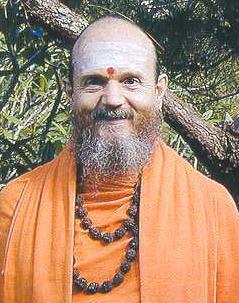 400.
Satguru
Bodhinatha Veylanswami (1942
- ) When Satguru Sivaya Subramuniyaswami attained
mahasamadhi, his great departure, on November 12, 2001, he
designated Bodhinatha Veylanswami, a disciple for 37 years, as
his successor. 400.
Satguru
Bodhinatha Veylanswami (1942
- ) When Satguru Sivaya Subramuniyaswami attained
mahasamadhi, his great departure, on November 12, 2001, he
designated Bodhinatha Veylanswami, a disciple for 37 years, as
his successor.
American born editor
of
Hinduism Today has observed:
"Hindus the world over,
while following unique and varied paths, are united by their
belief in karma, dharma, the all-pervasiveness of God, the
sanctity of the Vedas, reincarnation, noninjuriousness,
enlightenment, yoga, the illumined guru's centrality and the
mysticism of worship."
"The social, political power
of the family of faiths we call Hinduism is based on its
spiritual, mystical power, which abides in its many individual
sects and sampradayas, each with its enlightened guru lineages,
dynamic temples, noble traditions and profound scriptural
canons. This sectarian diversity is the real power of the Hindu
faith and must be preserved."
"From the
Hindu perspective, all of life is sacred, and performing our
duty is dharma. Dharma is a rich term that means "way of
righteousness, religion and fulfillment of duty." From this
lofty view, every deed is a part of our religious practice.
Everything we do is an act of worship and faith. There are no
purely secular activities. Our worship in the temple is part of
our dharma, and our work or occupation is part of our dharma.'
(source: Hinduism
Today - Jan/Feb/March 2005 and
July/August/September, 2004).
Top
of Page
Quotes401_420
Show
in alphabetical order



Page < 1 2 3 4 5 6 7 8 9 10 11 12 13 14 15 16 17 18 19 20 21 22 23 24 >
|